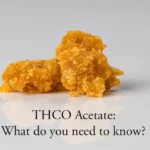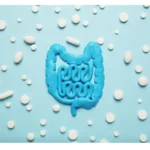Poly Aluminium Chloride (PAC) is a salt commonly used in water purification and as a coagulant. Compared to other aluminum salts, it’s best suited for removing and destabilizing suspended materials- thanks to its high charge.

It is used in water purification, ensuring water is safe for drinking. Like all other coagulants, it works by extracting all the dissolved matter in water by clumping them together and then suspending them. The resultant matter is then filtered and disposed of.
How PAC Is Made
Poly Aluminum Chloride consists of the following components.
- 100-121 parts of bauxite.
- 160-190 parts of hydrochloric acid (20-30%).
- 70-90 parts of calcium aluminate.
- 30-40 parts of calcium carbonate.
The production processes commence with.
- Heating the bauxite for 30 min – 2 hrs. (temp 1200-1500 °C).
- Crush the bauxite.
- Combine the bauxite and calcium aluminate in a reaction kettle.
- Add 25-30% hydrochloric acid into the kettle.
- Heat the mixture (95-110°C) for 1-3 hrs.
- Leave the mixture for 15-24 hrs for the reaction to take place, forming Polyaluminium Chloride.
At 105°C, the resultant solution should be dehydrated to retrieve a sample for analysis.
Pros Of Using PAC
- Highly effective coagulant.
- Require less amount compared to alum in water treatment.
- Produces less sludge when used.
- Very versatile. It has numerous areas of application.
- Having lower corrosivity makes it easy to store, transport, and use.
- Flocks formed are easy to filter. They fast to form and settle.
- It’s cheaper to use compared to aluminum sulfate.
- The quality of water treated using aluminum sulfate is higher.
- It can be used in water with varying pH levels (5-9).
- Reduces basicity in water.
- Tests concluded that there are fewer salts in water treated with PAC.
Uses of PAC
- It’s used in the purification of drinking water.
- Processing of sewage water.
- Industrial manufacturing of paper making glue.
- Printing and dying.
- Construction where it’s used in hardening concrete.
- Precision casting hardening.
- Refining glycerin.
- Big pharma in the making of medicine.
- Separation of Oil and water in refineries.
- Beauty and cosmetics.
- Production of grease-resistant products for fabrics.
Grades Of Poly Aluminium Chloride (PAC)
There are various grades of Polyaluminium chloride in the market with varying degrees of aluminum concentration- usually 9.5% – 18%. While choosing which grade to use, there are other factors other than the concentration of aluminum to take into consideration.
Commercial grade PAC products tend to have a higher degree of basification. This is the degree of concentration of Hydroxyl groups relative to aluminum ions. As a rule of thumb in PAC usage, the higher the basicity, the higher the efficiency, cationic charge density, and polymer value.
Poly Aluminium coagulants are increasingly finding their way into portable water treatment plants. In several instances during post-treatment pH adjustment, usage of alkali proved to be unnecessary. This has a positive effect not only on the quality of water but also on savings on production costs and maintenance requirements.
Market Analysis
Currently, the largest PAC market globally is in Asia-Pacific, valued at nearly $335 million. Due to current growth in development within the region, the demand shall grow by nearly 6% to cater to the rapid development.
China is currently the leader in this region, closely followed by South Korea and India. Most of the PAC purchased by these countries is mostly used in water purification.
Moreover, increased health concerns, coupled with the development of new water management and waste treatment solutions, will further lead to increased demand for PAC in the water treatment sector.
Just as the demand for Poly Aluminium Chloride (PAC) is global, production is global as well. To get a supplier go online where a quick search will reveal several manufacturers and distributors. Take your time while picking one to get the best deal.
Handling Of PAC
In small amounts, it’s not harmful to human eyes or skin. That being said, safety precautions need to be observed while using the agent. This includes ensuring that you have your protective gear on, i.e., gloves and safety glasses.
Join 25,000+ smart readers—don’t miss out!






